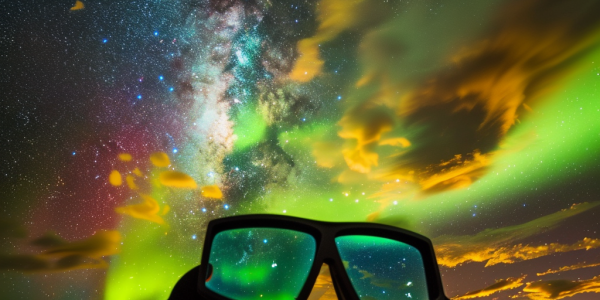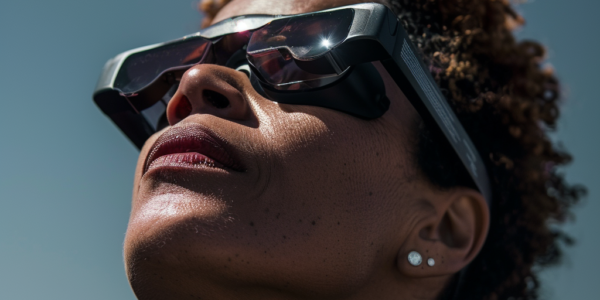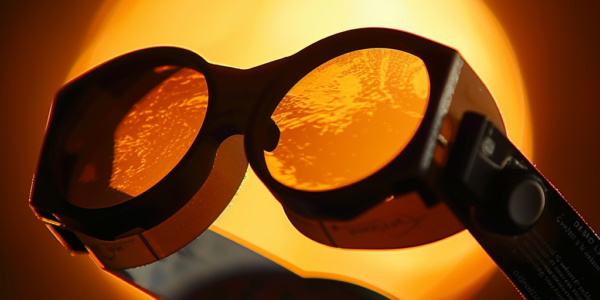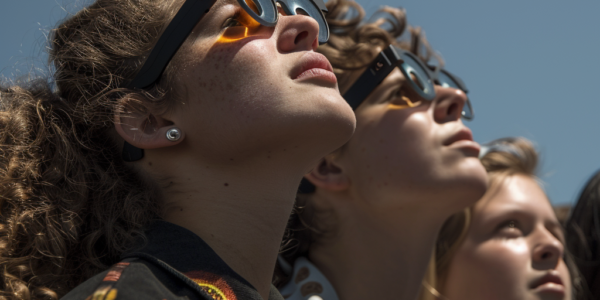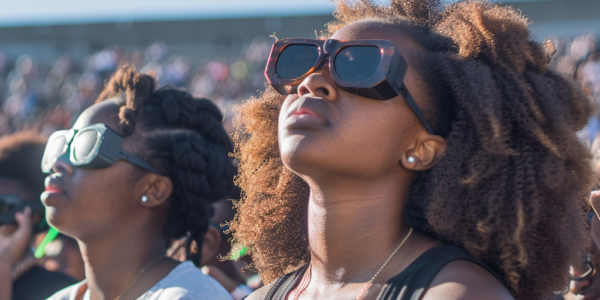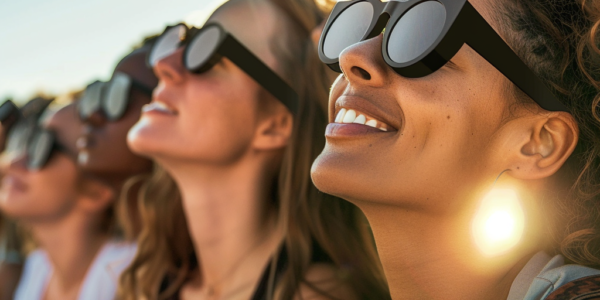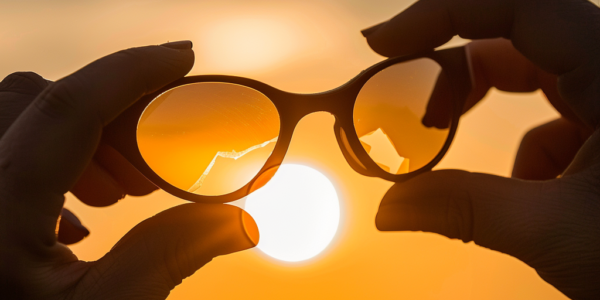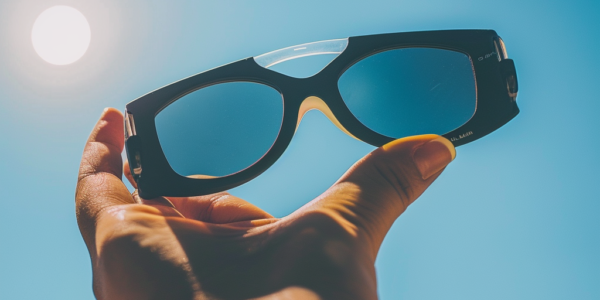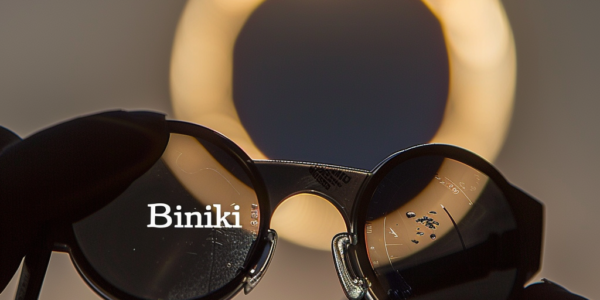Exciting Solar Activity Offers Skywatchers Chance to Observe Sunspots and Auroras
Astronomy enthusiasts, get ready! A surge in solar activity, including visible sunspots and powerful solar flares, offers a thrilling opportunity to observe the sun safely with eclipse glasses. As we approach peak aurora season, this is the perfect time to witness breathtaking natural light displays across North America. Stay informed on solar phenomena and ensure your safety with certified solar filters.
Safely Observing the Sun: Tips and Tools
Learn how to safely observe the Sun without damaging your eyes. Discover the different types of filters, such as white-light filters and hydrogen-alpha filters, that can be used with telescopes to view the Sun’s activity. Find out how to make the most of your eclipse glasses and other tools for safe solar observation.
Tips for Safely Viewing the Solar Eclipse
The highly anticipated solar eclipse is approaching, and it’s crucial for those planning to witness it to have their plans in place, including the possession of proper eyewear. USA TODAY has been guiding readers towards the safest, most reliable options for eclipse glasses, with some even available for free. For those still in need, some vendors and public libraries have offered giveaways. It’s important to take proper safety precautions, as regular sunglasses are not sufficient for viewing a solar eclipse. Proper eclipse glasses are 100,000 times darker than regular sunglasses and are crucial for safeguarding the sensitive retinas when looking skyward.
Chautauqua County procures eclipse glasses from China
Chautauqua County reveals that the eclipse glasses being distributed to the public were manufactured in China, but underwent rigorous safety measures and certification. While not listed on the American Astronomical Society’s page of suppliers of safe viewers and filters, the county emphasizes the safety and reliability of the glasses for eclipse viewing. With the highly anticipated eclipse approaching, it is essential for individuals to be well-informed about the safety and certification of the glasses they will be using.
Understanding the Dangers of Viewing the 2024 Solar Eclipse
Millions of Americans are eagerly anticipating the upcoming solar eclipse on April 8, 2024. However, it’s crucial to understand the potential dangers associated with viewing this natural phenomenon. NASA emphasizes the importance of eye protection during both partial and total solar eclipses. Looking directly at the sun, even during a partial eclipse, can lead to eye damage. Dr. Yehia Hashad, an ophthalmologist and retinal specialist at Bausch + Lomb, warns that there is no safe level of exposure to solar ultraviolet rays or infrared radiation. Given the dangers associated with viewing a solar eclipse, it’s crucial to use special glasses specifically designed for eclipse viewing.
Bowie State University to Host Solar Eclipse Watch Party
Join Bowie State University for a Solar Eclipse Watch Party on April 8, 2024, featuring a presentation by NASA engineers and 3000 pairs of eclipse glasses for attendees. Learn about the rare celestial event and the importance of safety while viewing the eclipse. Open to the public and free to attend, this event promises to be an educational and awe-inspiring experience.
Safety Precautions for Viewing the 2024 Total Solar Eclipse
Millions of people in North America are eagerly awaiting the total solar eclipse on April 8, 2024. However, it’s important to prioritize safety when viewing this celestial event. Staring directly at the sun during a solar eclipse can cause permanent eye damage, making it crucial to use proper eye protection. NASA Administrator Bill Nelson emphasized the importance of using eclipse glasses, stating, “Please, please put those glasses on.” Legitimate eclipse glasses should block out ultraviolet and visible light, with the ability to allow only very bright lights to be faintly visible when worn indoors. As the total solar eclipse approaches, it’s important for individuals to be well-informed about safe viewing practices to ensure a memorable and safe experience.
How to Safely View the Eclipse with Legitimate Solar Eclipse Glasses
As eclipse day approaches, make sure to have legitimate solar eclipse glasses to protect your eyes from permanent damage. Legitimate glasses should be marked with the ISO certification number ISO 12312-2 and registered as a ‘Solar Viewer Brand’ with the American Astronomical Society. Test your glasses ahead of time and inspect them for scratches and tears. Do not use ordinary sunglasses as they do not provide adequate protection. Check out local stores and museums for safe eclipse glasses.
Enthusiasts Prepare for 2024 Total Solar Eclipse with Safe Viewing Glasses
Prepare for the 2024 total solar eclipse by securing safe viewing glasses from reputable retailers. Ensure the glasses are certified by the International Organization for Standardization (ISO) to avoid counterfeit products. Stay vigilant against fake eclipse glasses and conduct pre-eclipse testing to confirm their effectiveness. Residents of Texas have a prime opportunity to experience the eclipse in its full splendor, so secure legitimate solar eclipse glasses for a memorable and safe viewing experience.
Eclipse Glasses Mislabeled and Should NOT Be Used to View Eclipse
Biniki brand eclipse glasses mislabeled and should not be used to view the upcoming eclipse on April 8. UK Libraries ask that these glasses be discarded immediately and not used for viewing the eclipse. Reliable vendors for eclipse glasses include Rainbow Symphony, American Paper Optics, and others recommended by the American Astronomical Society (AAS).

